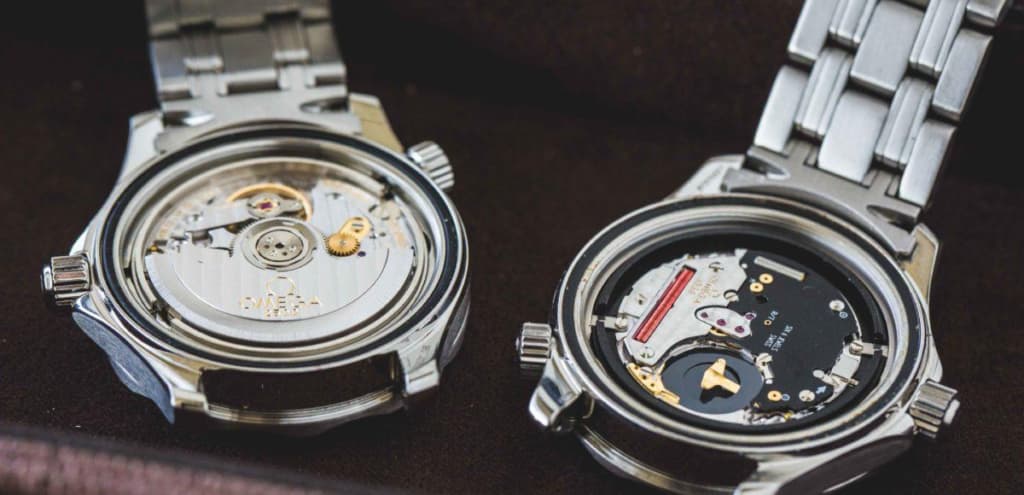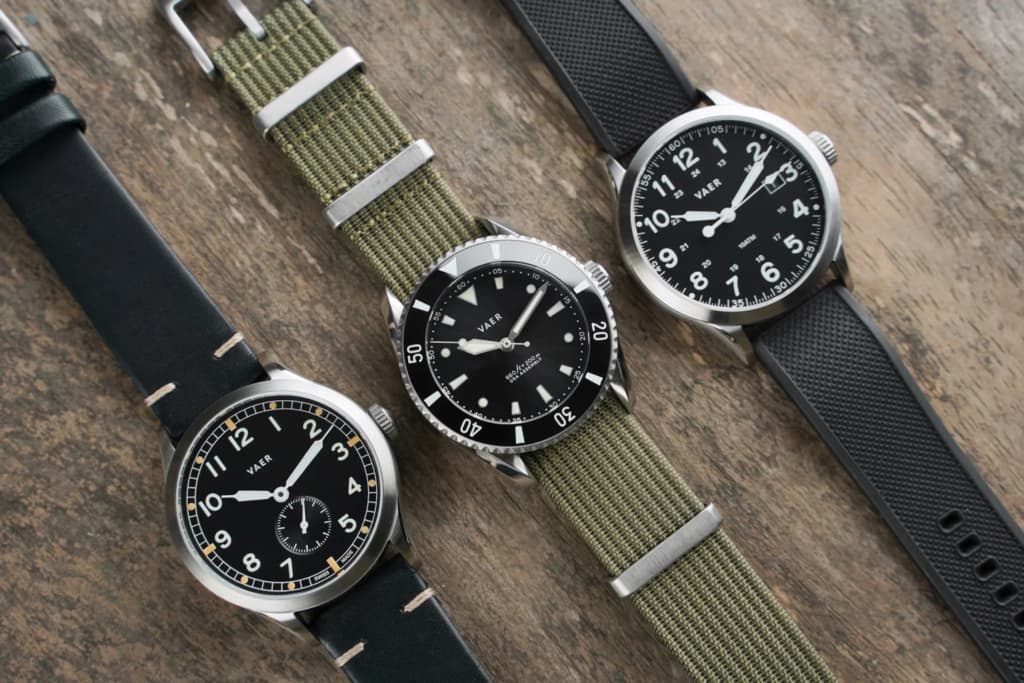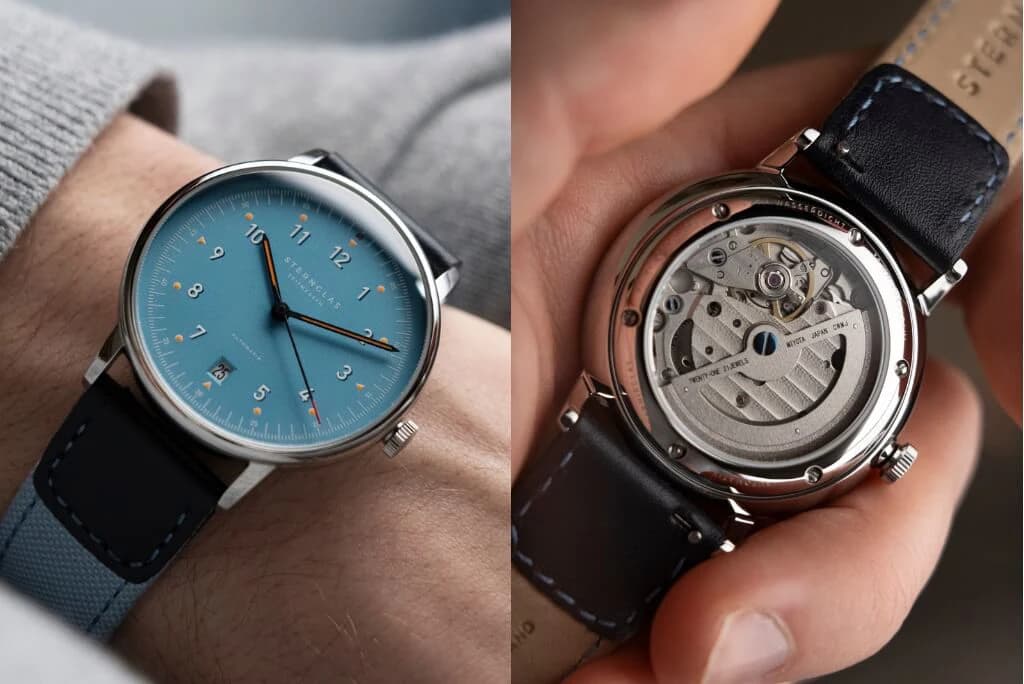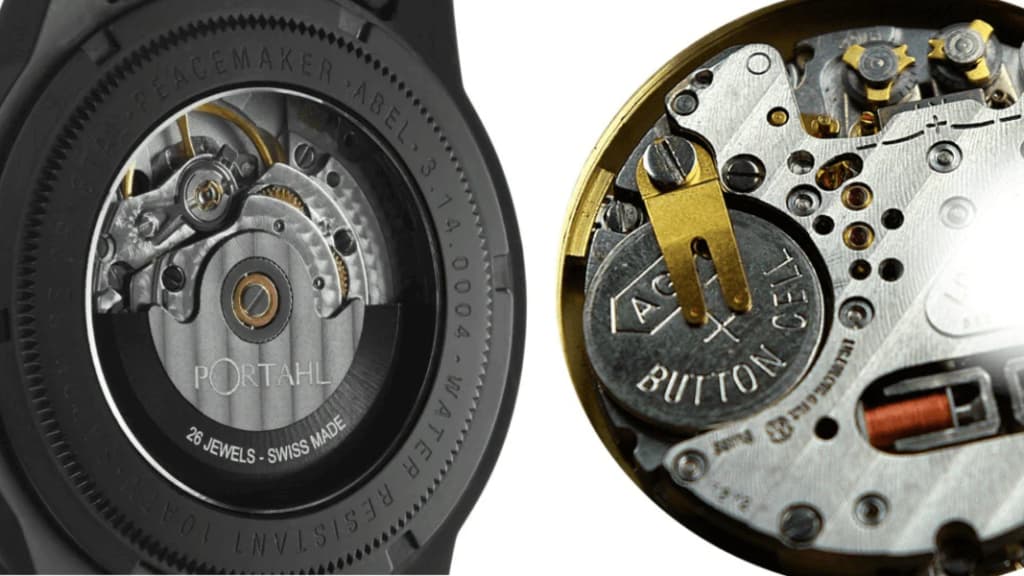The watch industry continues to evolve, yet the fundamental choice between mechanical and quartz movements remains as relevant today as it was decades ago. Whether you’re shopping for your first serious timepiece or adding to an existing collection, understanding these two distinct technologies will shape every aspect of your ownership experience.
This comprehensive guide examines the core differences between mechanical and quartz watches, covering everything from precision and maintenance to style preferences and long-term value. By the end, you’ll have the knowledge needed to make an informed decision that aligns with your lifestyle, budget, and personal taste.
Understanding Watch Movements: The Foundation of Your Choice
What Are Mechanical Watches?
Mechanical watches represent centuries of horological craftsmanship, powered entirely by a wound mainspring that stores energy and releases it through an intricate system of gears, wheels, and springs. The escapement mechanism regulates this energy release, creating the distinctive ticking sound that watch enthusiasts cherish. No battery, no electricity – just pure mechanical engineering at work.
The evolution of mechanical movements spans from early pocket watches to today’s sophisticated automatic and manual-wind wristwatches. Swiss manufacturers have perfected these movements over generations, creating complications like chronographs, moon phases, and perpetual calendars that showcase the incredible potential of mechanical engineering in miniature form.
What Are Quartz Watches?
Quartz watches revolutionized timekeeping when Seiko introduced the first commercial quartz wristwatch in 1969. These timepieces use a small piece of quartz crystal that vibrates at a precise frequency of 32,768 times per second when electrical current from a battery passes through it. This vibration is then converted into the familiar one-second tick through electronic circuits.
The quartz crisis of the 1970s and 1980s nearly devastated the Swiss watch industry as Japanese manufacturers flooded the market with accurate, affordable quartz timepieces. Today, quartz technology has evolved to include solar-powered movements, radio-controlled synchronization, and hybrid systems that combine quartz precision with mechanical aesthetics.
Accuracy Showdown: Precision in Timekeeping
Mechanical Watch Accuracy
Most mechanical watches achieve accuracy within -20 to +40 seconds per day, though high-grade movements can perform much better. Swiss chronometer-certified watches must maintain accuracy within -4 to +6 seconds per day under specific testing conditions. However, real-world performance varies significantly based on several factors.
Temperature fluctuations, magnetic fields, physical shocks, and even the position of the watch affect mechanical accuracy. Your wrist’s natural movement helps automatic watches maintain consistent power, but extended periods of inactivity can cause the mainspring to unwind, requiring manual adjustment when you next wear the watch.
Key factors affecting mechanical accuracy include:
- Temperature variations (cold slows the movement, heat accelerates it)
- Magnetic interference from electronic devices
- Physical orientation (watches may run differently when worn vs. lying flat)
- Mainspring tension levels throughout the power reserve cycle
- Age and condition of lubricants within the movement
Quartz Watch Accuracy
Quality quartz movements typically achieve accuracy within ±15 seconds per month, making them roughly 60 times more accurate than mechanical watches. Premium quartz movements, particularly those with thermal compensation, can maintain accuracy within ±10 seconds per year. This exceptional precision stems from the consistent frequency of quartz crystal oscillation.
The stability of quartz crystals under normal conditions means external factors have minimal impact on timekeeping performance. Temperature remains the primary variable affecting quartz accuracy, but modern movements include compensation circuits that adjust for thermal variations automatically.

Durability and Longevity: Built to Last
Mechanical Watch Durability
Well-maintained mechanical watches can function for generations, with some vintage pieces from the early 1900s still keeping excellent time today. The key lies in regular servicing every 3-5 years, during which watchmakers disassemble, clean, lubricate, and adjust the entire movement. This maintenance ensures optimal performance and prevents excessive wear on delicate components.
The modularity of mechanical movements makes repair straightforward for skilled watchmakers. Individual components can be replaced or refurbished without affecting the entire movement, contributing to the long lifespan these watches enjoy when properly cared for.
Essential mechanical watch care includes:
- Regular servicing by qualified watchmakers every 3-5 years
- Avoiding extreme magnetic fields (speakers, phones, computers)
- Protecting from severe shocks and impacts during sports activities
- Keeping the crown properly screwed down on water-resistant models
- Winding manual watches consistently to maintain power reserve
Quartz Watch Durability
Quartz movements contain fewer moving parts than mechanical counterparts, reducing points of potential failure. The electronic circuits and stepper motor that drive the hands are remarkably robust, often outlasting multiple battery changes without requiring service. However, when quartz movements do fail, repair can be more challenging than mechanical watches.
Battery replacement remains the primary maintenance requirement for quartz watches, typically needed every 1-3 years depending on the movement and features. Some advanced quartz watches include battery life indicators, while others use solar cells or kinetic charging to extend intervals between battery changes.
Quartz watch maintenance tips:
- Replace batteries promptly to prevent leakage damage
- Use authorized service centers for water-resistant models
- Avoid exposing to extreme temperatures during storage
- Test water resistance after battery changes if applicable
Style and Aesthetics: Making a Statement
Mechanical Watch Appeal
The artistry of mechanical watchmaking extends far beyond mere function, representing a tangible connection to centuries of horological tradition. Open dials and exhibition casebacks reveal the mesmerizing dance of gears, springs, and jewels working in perfect harmony. The gentle sweep of mechanical seconds hands and the subtle variations in timing create character that mass-produced items simply cannot match.
Skeleton watches take this aesthetic philosophy to its logical conclusion, removing as much dial material as possible to showcase the movement’s architecture. Hand-finishing techniques like perlage, côtes de Genève, and beveling transform functional components into works of art that reward close examination with a loupe or magnifying glass.
Popular mechanical watch styles include:
- Classic dress watches with clean, minimalist dials
- Sports chronographs with multiple subdials and racing heritage
- Skeleton designs showcasing movement architecture
- Vintage-inspired pieces with retro aesthetic elements
- Complicated watches featuring moon phases, GMT functions, or calendars
Quartz Watch Versatility
Quartz technology’s compact size and electrical power source enable design possibilities that mechanical movements cannot achieve. Ultra-thin profiles, unconventional case shapes, and integrated digital displays expand creative options for designers working with quartz movements. The absence of a rotor allows for slimmer automatic-style cases without sacrificing functionality.
Modern quartz watches incorporate advanced materials like ceramic, titanium, and carbon fiber more easily than mechanical pieces, as the movement’s reduced mass and vibration stress these materials less. Additionally, quartz precision enables complications like world time, alarms, and countdown timers at accessible price points.
Contemporary quartz watch categories include:
- Ultra-thin dress watches with minimal thickness profiles
- Sports watches with multiple time zone displays
- Fashion watches emphasizing bold colors and materials
- Hybrid smartwatches combining analog displays with digital connectivity
- Solar-powered eco-friendly timepieces with extended power reserves
Cost Analysis: Investment vs Value
Mechanical Watch Pricing
Entry-level Swiss mechanical watches typically start around $200-500, offering reliable movements in simple cases with basic finishing. Mid-range mechanical timepieces ($500-2000) feature enhanced decoration, better materials, and improved accuracy standards. The luxury segment ($2000+) showcases haute horlogerie finishing, precious metals, and complex complications that represent the pinnacle of watchmaking artistry.
Manufacturing costs for mechanical movements remain high due to the precision machining required for hundreds of microscopic components. Hand-assembly and regulation by skilled watchmakers add significant labor costs, particularly for complicated movements with multiple functions beyond basic timekeeping.
Mechanical watch price categories:
- Entry-level ($200-500): Basic Swiss or Japanese movements, steel cases
- Mid-range ($500-1500): Enhanced finishing, better accuracy, premium materials
- Premium ($1500-5000): In-house movements, precious metals, complications
- Luxury ($5000-25000): Haute horlogerie finishing, limited editions, complex complications
- Ultra-luxury ($25000+): Masterpiece complications, precious stones, artistic cases
Quartz Watch Pricing
The efficiency of quartz movement production enables exceptional value across all price ranges. Reliable quartz timepieces start under $50, while premium quartz watches rarely exceed $1000 unless they incorporate precious materials or advanced complications. This accessibility makes quartz the democratic choice for accurate timekeeping without significant financial investment.
High-end quartz movements like those found in Omega, Breitling, and Citizen watches offer features like perpetual calendars, multiple time zones, and radio synchronization at prices far below equivalent mechanical complications. The reduced manufacturing complexity of quartz movements allows brands to focus resources on case materials, finishing quality, and innovative features.
Quartz price segments include:
- Budget ($20-100): Basic movements, plastic or steel cases, reliable accuracy
- Mid-range ($100-500): Enhanced materials, water resistance, additional features
- Premium ($500-1500): Luxury brand prestige, precious metals, advanced complications
- Ultra-premium ($1500+): Limited editions, exotic materials, collector appeal

Long-term Value Retention
Mechanical watches, particularly from established Swiss manufacturers, tend to maintain value better than quartz pieces due to their artisanal nature and collector appeal. Vintage mechanical watches often appreciate in value, especially rare or historically significant models. However, this investment potential primarily applies to luxury pieces rather than entry-level mechanical watches.
Quartz watches typically depreciate more rapidly due to their mass-production nature and shorter model lifecycles. However, their lower initial cost and minimal maintenance requirements can provide superior practical value for daily wear, especially when replacement cost remains affordable throughout the watch’s lifespan.
2025 Market Trends and Key Innovations
Mechanical Watch Evolution
Contemporary mechanical watch development focuses on improving anti-magnetic properties, extending power reserves, and incorporating new materials like silicon components that resist magnetic fields and temperature variations. Brands like Omega, Rolex, and Patek Philippe have developed proprietary alloys and manufacturing techniques that enhance traditional mechanical movements’ performance and reliability.
Independent watchmakers continue pushing creative boundaries with unique complications, artistic finishing techniques, and limited-production pieces that showcase mechanical innovation. The resurgence of interest in traditional craftsmanship has sparked renewed investment in mechanical movement development, particularly among younger collectors who appreciate the artisanal aspects of fine watchmaking.
Recent mechanical innovations include:
- Silicon balance springs and escapements for enhanced accuracy
- Anti-magnetic movements resistant to 15000+ gauss
- Extended power reserves exceeding 70 hours
- Proprietary lubricants with extended service intervals
Quartz Technology Advances
Modern quartz development emphasizes environmental sustainability, connectivity features, and hybrid technologies that combine quartz precision with mechanical aesthetics. Solar charging systems have evolved beyond simple photovoltaic cells to include kinetic energy harvesting and body heat conversion, reducing battery dependency significantly.
Connectivity features in traditional analog quartz watches now include smartphone synchronization, activity tracking, and notification systems that maintain classic watch aesthetics while adding modern functionality. These hybrid approaches appeal to consumers seeking smart features without sacrificing traditional watch design principles.
Which Type Should You Choose? Decision Framework
Choose Mechanical If…
Consider mechanical watches when the journey matters as much as the destination. These timepieces reward owners who appreciate traditional craftsmanship, enjoy the ritual of daily winding, and value the connection to horological history that mechanical movements represent.
Mechanical watches suit you if you:
- Appreciate traditional craftsmanship and artisanal manufacturing
- Enjoy the meditative ritual of winding and setting your watch
- Value investment potential and collector appeal over pure functionality
- Prefer the smooth sweep of mechanical seconds hands
- Want a timepiece that can be serviced and restored indefinitely
- Are drawn to complications like chronographs or moon phase displays
Choose Quartz If…
Quartz technology excels for individuals prioritizing accuracy, convenience, and value in their daily timepiece. These watches serve users who need reliable timekeeping without ongoing maintenance concerns, making them ideal for professional environments, travel, and active lifestyles where precision matters most.
Quartz watches work best when you:
- Require maximum accuracy for professional or personal reasons
- Prefer low-maintenance timepieces with minimal service requirements
- Need multiple functions like alarms, timers, or world time displays
- Have an active lifestyle requiring shock and water resistance
- Want affordable access to luxury brand prestige and quality
- Appreciate modern materials and contemporary design aesthetics

Top 2025 Recommendations
Best Mechanical Watches by Budget
For entry to mid-range mechanical options ($200-2000), consider the Seiko Prospex series, which offers robust movements with excellent finishing at accessible prices. The Hamilton Jazzmaster collection provides Swiss reliability with American design heritage, while Tissot’s PRC 200 delivers diving capability with mechanical precision. Orient’s Bambino dress watches showcase Japanese manufacturing quality with vintage-inspired styling.
Premium mechanical choices ($2000+) include the Omega Speedmaster Professional, renowned for space exploration heritage and chronograph functionality. The Tudor Black Bay series offers Rolex-quality manufacturing at approachable luxury prices, while the Breitling Navitimer provides pilot watch functionality with in-house movement excellence.
Best Quartz Watches by Budget
Budget-friendly to mid-range quartz selections (under $500) feature the Citizen Eco-Drive collection, which eliminates battery changes through solar charging technology. Casio’s G-Shock series provides unmatched durability for active lifestyles, while Timex Weekender models offer classic American styling with reliable quartz movements.
Premium quartz timepieces ($500+) include the Omega Seamaster Planet Ocean with Co-Axial movement precision, Breitling Emergency watches with built-in emergency beacons, and Grand Seiko’s Spring Drive technology that combines quartz accuracy with mechanical aesthetics through innovative hybrid engineering.
Choosing Your Perfect Watch in 2025
The choice between mechanical and quartz watches ultimately reflects your personal priorities, lifestyle requirements, and emotional connection to timekeeping technology. Mechanical watches offer artisanal craftsmanship, investment potential, and the satisfaction of owning a miniature mechanical marvel that connects you to centuries of horological tradition.
Quartz technology provides unmatched accuracy, convenience, and value across all price ranges, making precision timekeeping accessible to everyone while offering advanced features that mechanical movements cannot achieve. Both technologies have earned their place in modern horology, serving different needs and preferences within the watch-wearing community. Consider your daily routine, aesthetic preferences, and long-term goals when making this important decision – the perfect watch is the one that brings you joy every time you check the time.
